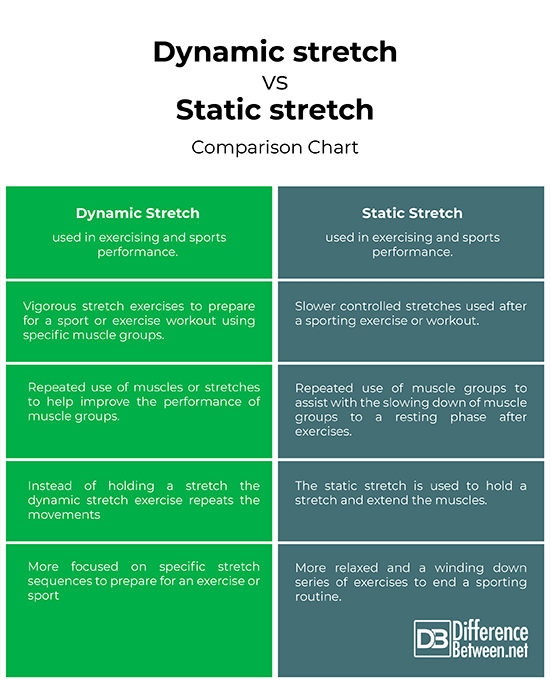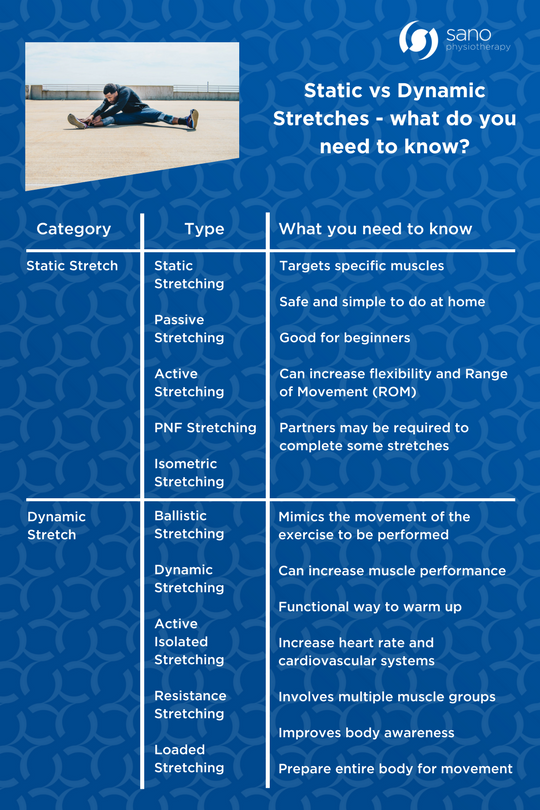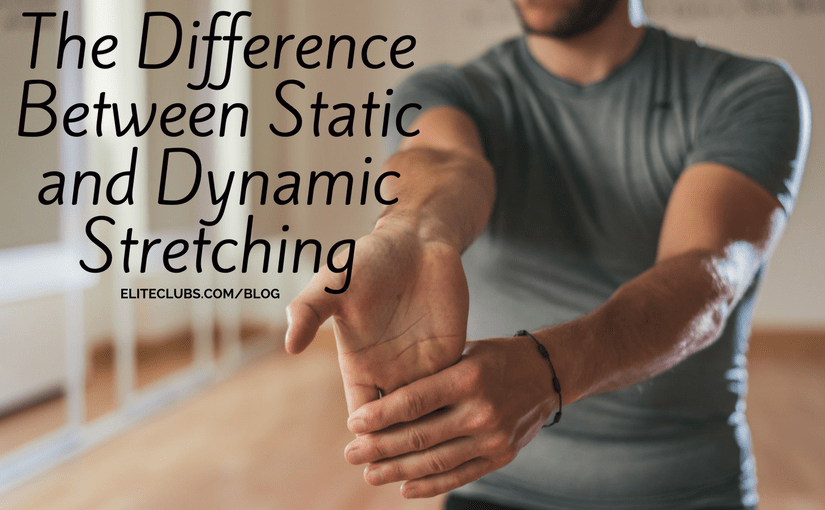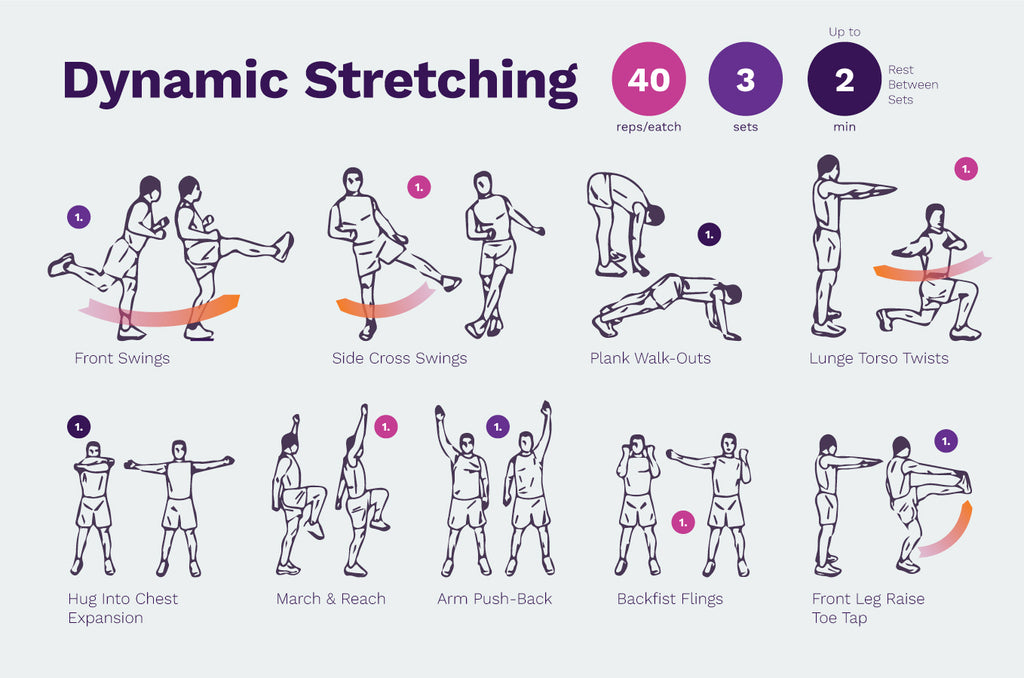Are you confused about the difference between dynamic and static stretching? Do you find yourself wondering when to use each? In this article, we will break down the distinction between these two types of stretches and provide insight into the most appropriate situations to incorporate them into your workout routine. By the end, you will have a clear understanding of dynamic and static stretching, helping you optimize your warm-up and cooldown sessions for maximum effectiveness.
Dynamic Stretching
Definition
Dynamic stretching refers to a form of stretching that involves active movements to improve flexibility and warm up the muscles. It involves moving parts of your body through a full range of motion in a controlled manner.
Purpose
The purpose of dynamic stretching is to increase the temperature and elasticity of the muscles, tendons, and ligaments, preparing them for physical activity. It also helps to improve joint mobility, enhance coordination, and activate the nervous system.
Examples
Some common examples of dynamic stretching include arm swings, hip circles, walking lunges, high knees, and ankle bounces. These movements involve continuous repetitions and should be done in a smooth and controlled manner.
Benefits
Dynamic stretching offers several benefits. Firstly, it increases blood flow to the muscles, which aids in warming up the body and preparing it for exercise. It also improves range of motion and flexibility, allowing for better performance in activities that require a wide range of motion. Dynamic stretching can also enhance muscle coordination and balance, as well as help prevent injuries.
When to Use Dynamic Stretching
Dynamic stretching is best utilized before a workout or any physical activity, as it helps to prepare your body for the demands of movement. It is particularly effective when used as part of a warm-up routine, as it increases blood flow, warms up the muscles, and activates the nervous system.
Static Stretching
Definition
Static stretching involves stretching a muscle or group of muscles to its furthest point and holding it for a prolonged period, usually around 30 seconds or more. It is a passive stretch where you gradually lengthen and hold a position without any additional movement.
Purpose
The purpose of static stretching is to improve flexibility, relax muscles, and increase the overall range of motion in a joint. It is often used for general flexibility training and to improve muscle balance and posture.
Examples
Some common examples of static stretching include hamstring stretches, quadriceps stretches, calf stretches, shoulder stretches, and triceps stretches. These stretches are held for a specific duration while maintaining a steady position.
Benefits
Static stretching offers several benefits. Firstly, it helps increase flexibility by lengthening the muscles and connective tissues. It also promotes muscle relaxation and can help reduce post-workout muscle soreness. Additionally, static stretching can be effective in preventing muscle imbalances and improving overall muscle function.
When to Use Static Stretching
Static stretching is best used after exercise or as part of a cool-down routine. It is beneficial in promoting muscle relaxation and reducing muscle soreness after intense physical activity. Static stretching can also be incorporated into general flexibility training to improve overall range of motion.
Key Differences
Movement
One key difference between dynamic and static stretching is the movement involved. Dynamic stretching involves continuous movements through a full range of motion, while static stretching involves holding a stationary position for a prolonged period.
Duration
Dynamic stretches are typically done for shorter durations, with each movement repeated several times. On the other hand, static stretches are held for a longer duration, usually around 30 seconds or more.
Muscle Activation
Dynamic stretching activates the muscles and prepares them for movement and physical activity. It helps to increase blood flow and improve coordination. Static stretching, on the other hand, relaxes and stretches the muscles, aiming to improve flexibility.
Injury Risk
Dynamic stretching is generally considered to have a lower risk of injury compared to static stretching. This is because it helps increase blood flow and warming up the muscles before strenuous activity, reducing the chances of muscle strains or tears. Static stretching, if done excessively or when the muscles are not adequately warmed up, may increase the risk of injury.
Effect on Performance
Dynamic stretching is known to enhance performance by improving range of motion, activating the muscles, and promoting blood flow. It is particularly beneficial for activities that require explosive movements and a wider range of motion. Static stretching, while it may temporarily decrease muscle performance, can be beneficial for improving general flexibility and posture.
Dynamic Stretching Techniques
Arm Swings
Arm swings involve swinging your arms in a controlled manner, forwards and backwards. This helps to warm up the shoulder joints and improve flexibility in the upper body.
Hip Circles
Hip circles involve rotating your hips in a circular motion while keeping the upper body stationary. This dynamic stretch helps to improve hip joint mobility and loosen up the muscles around the hips.
Walking Lunges
Walking lunges are performed by taking a step forward with one leg and dropping the opposite knee towards the ground. This dynamic stretch targets the hips, hamstrings, and quadriceps, improving flexibility and activating the leg muscles.
High Knees
High knees involve lifting each knee up towards your chest in a rapid alternating motion while jogging in place. This dynamic stretch helps to warm up the leg muscles and increase hip mobility.
Ankle Bounces
Ankle bounces are performed by repeatedly bouncing up and down on the balls of your feet, allowing the ankles to flex and extend. This dynamic stretch targets the calf muscles and is particularly useful for activities that require ankle stability and agility.

Static Stretching Techniques
Hamstring Stretch
To perform a hamstring stretch, sit on the floor with one leg extended in front of you and the other bent. Reach towards the extended leg and gently lean forward, aiming to feel a gentle stretch in the back of your thigh.
Quadriceps Stretch
Stand tall and grab one foot with your hand, pulling it towards your buttocks while keeping your knees together. You should feel a stretch in the front of your thigh. Hold for the desired duration and repeat on the other leg.
Calf Stretch
Find a wall or sturdy object to lean against. Place one foot forward with the knee slightly bent, and the other leg straight behind you. Lean forward while keeping the back heel flat on the ground, feeling a stretch in the calf muscle. Switch legs and repeat.
Shoulder Stretch
Stand tall and reach one arm across your chest, using the opposite arm to gently pull it towards your body. You should feel a stretch in the back of the shoulder. Hold for the desired duration and repeat on the other side.
Triceps Stretch
Take one arm overhead and bend it so that your hand is reaching towards the opposite shoulder blade. Use your other hand to gently push on the elbow, feeling a stretch in the back of the arm. Hold for the desired duration and repeat with the other arm.
Benefits of Dynamic Stretching
Improved Flexibility
Dynamic stretching helps to improve flexibility by actively moving the joints through a full range of motion. This helps to lengthen and stretch the muscles, tendons, and ligaments, leading to improved flexibility and range of motion.
Increased Blood Flow
Dynamic stretching increases blood flow to the muscles, which helps to warm them up and prepare them for physical activity. Increased blood flow brings oxygen and nutrients to the muscles, enhancing their performance during exercise.
Enhanced Performance
Dynamic stretching activates the muscles and nervous system, improving muscle coordination and balance. By preparing the body for movement, it can help enhance overall performance and efficiency during physical activities.
Warm-up Effect
The dynamic movements involved in dynamic stretching help to increase body temperature, which is essential for preventing injuries and improving muscle elasticity. Warming up the muscles also improves joint mobility and prepares the body for the demands of exercise.

Benefits of Static Stretching
Improved Flexibility
Static stretching helps to improve flexibility by passively lengthening the muscles and connective tissues. Holding a static stretch for a prolonged period allows the muscles to gradually relax and elongate, resulting in improved flexibility.
Enhanced Muscle Relaxation
Static stretching promotes muscle relaxation by activating the body’s natural relaxation response. This can help reduce muscle tension and tightness, especially after intense physical activity.
Reduced Muscle Soreness
Engaging in static stretching after exercise can help reduce muscle soreness and stiffness. This is because static stretching promotes blood flow and can help remove metabolic waste products that accumulate during exercise.
Injury Prevention
Regular static stretching can help prevent muscle imbalances, which can lead to injuries. By improving flexibility and joint mobility, static stretching allows for better movement mechanics and reduces the risk of strains and muscle tears.
When to Use Dynamic Stretching
Before a Workout
Dynamic stretching is best used as part of a warm-up routine before a workout. By increasing blood flow and warming up the muscles, dynamic stretching prepares your body for the demands of physical activity.
Prior to Sports Activities
Dynamic stretching is particularly beneficial before engaging in sports activities. It helps to activate the muscles, improve coordination, and increase joint range of motion, enhancing your overall performance and reducing the risk of injuries.
During Warm-up Routine
Dynamic stretching is an excellent addition to any warm-up routine. It helps to increase body temperature, improve flexibility, and prepare the muscles and joints for the activity to come.

When to Use Static Stretching
After Exercise
Static stretching is most effective when performed after exercising. This allows the muscles to relax and elongate, promoting blood flow and reducing muscle soreness. It also helps to restore the muscles to their pre-workout length and prevent them from becoming overly tight.
During a Cool-down
Static stretching can be beneficial during a cool-down routine after a workout. It helps to bring the body back to a resting state, reduce muscle tension, and promote relaxation.
General Flexibility Training
Static stretching is commonly used as part of general flexibility training. By regularly incorporating static stretches into your routine, you can improve overall flexibility, muscle balance, and joint mobility.
Conclusion
Understanding the difference between dynamic and static stretching is crucial for maximizing the effectiveness of your warm-up and cool-down routines. Dynamic stretching is ideal for preparing your body for physical activity by increasing blood flow, improving flexibility, and enhancing muscle activation. On the other hand, static stretching is best utilized after exercise to promote muscle relaxation, enhance flexibility, and reduce muscle soreness. By incorporating both types of stretching into your fitness regimen appropriately, you can optimize your performance, prevent injuries, and improve your overall flexibility and range of motion.



